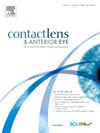Artificial intelligence in corneal diseases: A narrative review
IF 4.1
3区 医学
Q1 OPHTHALMOLOGY
引用次数: 0
Abstract
Corneal diseases represent a growing public health burden, especially in resource-limited settings lacking access to specialized eye care. Artificial intelligence (AI) offers promising solutions for automating the diagnosis and management of corneal conditions. This narrative review examines the application of AI in corneal diseases, focusing on keratoconus, infectious keratitis, pterygium, dry eye disease, Fuchs endothelial corneal dystrophy, and corneal transplantation. AI models integrating diverse imaging modalities (e.g., corneal topography, slit-lamp, and anterior segment OCT images) and clinical data have demonstrated high diagnostic accuracy, often outperforming human experts. Emerging trends include the incorporation of biomechanical data to enhance keratoconus detection, leveraging in vivo confocal microscopy for diagnosing infectious keratitis, and employing multimodal approaches for comprehensive disease analysis. Additionally, AI has shown potential in predicting disease progression, treatment outcomes, and postoperative complications in corneal transplantation. While challenges remain such as population heterogeneity, limited external validation, and the “black box” nature of some models, ongoing advancement in explainable AI, data augmentation, and improved regulatory frameworks can serve to address these limitations.
人工智能在角膜疾病中的应用:综述。
角膜疾病是一个日益沉重的公共卫生负担,尤其是在资源有限、缺乏专业眼科护理的环境中。人工智能(AI)为角膜疾病的自动化诊断和管理提供了前景广阔的解决方案。这篇叙述性综述探讨了人工智能在角膜疾病中的应用,重点关注角膜炎、感染性角膜炎、翼状胬肉、干眼症、富克斯内皮角膜营养不良症和角膜移植。集成了多种成像模式(如角膜地形图、裂隙灯和前段 OCT 图像)和临床数据的人工智能模型已证明诊断准确性很高,往往优于人类专家。新出现的趋势包括结合生物力学数据加强角膜病检测、利用体内共焦显微镜诊断感染性角膜炎,以及采用多模态方法进行综合疾病分析。此外,人工智能在预测角膜移植的疾病进展、治疗效果和术后并发症方面也显示出潜力。虽然仍存在人口异质性、有限的外部验证和某些模型的 "黑箱 "性质等挑战,但可解释的人工智能、数据扩增和改进的监管框架的不断进步可有助于解决这些局限性。
本文章由计算机程序翻译,如有差异,请以英文原文为准。
求助全文
约1分钟内获得全文
求助全文
来源期刊

Contact Lens & Anterior Eye
OPHTHALMOLOGY-
CiteScore
7.60
自引率
18.80%
发文量
198
审稿时长
55 days
期刊介绍:
Contact Lens & Anterior Eye is a research-based journal covering all aspects of contact lens theory and practice, including original articles on invention and innovations, as well as the regular features of: Case Reports; Literary Reviews; Editorials; Instrumentation and Techniques and Dates of Professional Meetings.
 求助内容:
求助内容: 应助结果提醒方式:
应助结果提醒方式:


